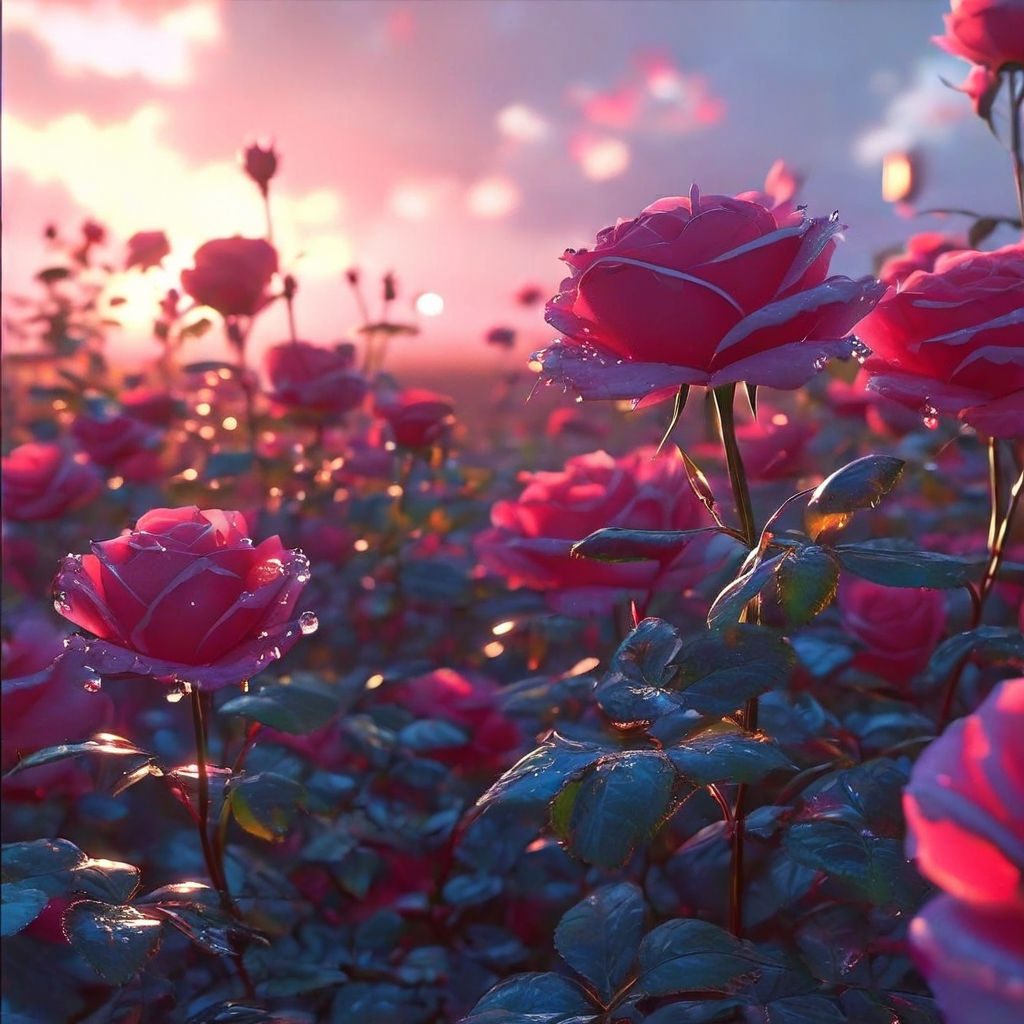
Roses, often heralded as the universal symbol of love and beauty, have long held a significant place in human history and culture. With their delicate petals and enchanting fragrance, roses have been revered by various civilizations, appearing in art, literature, and religious texts. However, beyond their aesthetic appeal, roses communicate a myriad of emotions and messages, largely dictated by their color. Each hue of rose carries its own unique symbolism, conveying different sentiments and intentions.
Historically, the language of flowers, known as floriography, has been a means of covert communication. During the Victorian era, roses of different colors were exchanged to express feelings that societal norms might have otherwise suppressed. This nuanced form of expression allowed individuals to convey love, admiration, gratitude, and even sorrow without a single word spoken. Over time, these symbolic meanings have evolved, reflecting the changing cultural contexts in which they are interpreted.
For instance, the red rose is universally recognized as a symbol of romantic love and passion. Its deep, rich color is synonymous with intense emotions and desire. Conversely, the white rose signifies purity, innocence, and new beginnings, often associated with weddings and christenings. Pink roses, with their softer, more gentle hue, convey gratitude, admiration, and joy, making them a versatile choice for a variety of occasions. Yellow roses, once a symbol of jealousy, have transformed over the years to represent friendship, warmth, and happiness.

While these general associations are widely accepted, the meanings of rose colors can vary significantly across different cultures and regions. In some cultures, roses of a particular color may hold a completely different connotation, influenced by local traditions, beliefs, and histories. Understanding these cultural nuances adds depth to the appreciation of roses and the messages they convey. This exploration of the symbolism and popularity of rose colors in different countries will uncover the diverse ways in which this beloved flower continues to touch hearts and convey sentiments worldwide.
Rose Colors and Their Popularity in Western Countries
In Western countries including the United States, Canada, and European nations, roses hold significant symbolic value and their colors convey various meanings. The red rose, often synonymous with love and romance, is the most popular choice for occasions such as Valentine’s Day and anniversaries. The intense hue symbolizes deep passion and commitment, making it a staple in romantic gestures.
White roses, on the other hand, are emblematic of purity, innocence, and new beginnings. They are frequently chosen for weddings, symbolizing the purity of the bride and the new chapter in the couple’s life. Additionally, white roses are also common in funeral arrangements as they convey reverence and honor for the departed, marking a respectful farewell.

Pink roses in Western cultures are associated with admiration, grace, and joy. Their softer hues make them a popular choice for expressing gratitude and appreciation. They are often gifted on occasions like birthdays, celebrations of achievements, and Mother’s Day. Light pink roses denote gentleness and admiration, while darker shades can signify gratitude and appreciation.

Yellow roses have a unique standing in Western traditions. They symbolize friendship, joy, and good health. Unlike the romantic connotations of red roses, yellow roses are often exchanged between friends and family members to brighten someone’s day or to wish them well. Their vibrant color conveys warmth and positivity, making them suitable for a variety of cheerful occasions.
Beyond these, specific customs and traditions also underscore the use of certain rose colors. For instance, in some European countries, a single red rose is often given to express deep romantic interest, while a bouquet of mixed roses might be used to convey a range of emotions. In funerals, it is not unusual to see a combination of white and red roses to symbolize unity and reverence.
Rose Colors and Their Cultural Significance in Eastern Countries
In Eastern countries such as China, Japan, and India, the symbolism of rose colors is deeply intertwined with their rich cultural heritage and traditions. Unlike the Western interpretations, which often focus on romantic love and friendship, Eastern cultures attribute a broader range of meanings to different rose colors. These meanings are often rooted in historical, spiritual, and social contexts.
In China, red roses are particularly significant. They are symbols of prosperity, success, and good fortune. Red roses are commonly used during Chinese New Year celebrations and weddings to convey happiness and joy. Additionally, the color red itself holds a special place in Chinese culture, symbolizing luck and auspiciousness.
White roses in China, however, have a contrasting meaning. They are often associated with funerals and mourning. The white color symbolizes purity and the passage of a loved one into the afterlife. This stands in stark contrast to Western traditions, where white roses often signify innocence and new beginnings.
In Japan, rose colors carry their own unique significance. Red roses are symbols of love and passion, much like in Western cultures. However, yellow roses are viewed differently. While in the West yellow roses often represent friendship and joy, in Japan, they can symbolize jealousy or infidelity. This nuanced interpretation reflects the complex layers of Japanese cultural beliefs.
India also has its distinctive associations with rose colors. Red roses are widely used in religious ceremonies and festivals, symbolizing love and devotion to the divine. White roses, on the other hand, are often used in spiritual contexts to signify purity and peace. Yellow roses in India are commonly associated with friendship and are often exchanged during the festival of Raksha Bandhan to celebrate the bond between siblings.
Across various Asian nations, roses are integral to cultural expressions and traditions. They are not just decorative elements but are imbued with profound meanings that reflect the values and beliefs of these societies. Whether used in festivals, religious ceremonies, or personal celebrations, the colors of roses in Eastern cultures offer a fascinating glimpse into their rich cultural tapestries.
Global Trends and the Evolution of Rose Color Meanings
The meanings and popularity of rose colors have undergone significant transformations due to globalization and cross-cultural exchanges. Historically, different cultures attributed specific meanings to rose colors, but these traditional associations have evolved as societies become more interconnected. For instance, while red roses have long symbolized love and passion in Western cultures, their significance has broadened to encompass respect and admiration in various Asian countries.
Emerging trends show that certain rose colors are gaining popularity in regions where they were previously uncommon. For example, blue roses, once a rarity and often associated with mystery and the unattainable, are becoming increasingly popular in countries like Japan and South Korea. This shift can be attributed to the influence of international marketing campaigns and the fascination with novel and unique floral varieties.
Social media platforms have played a pivotal role in shaping modern perceptions of rose colors. Platforms like Instagram and Pinterest, with their visually driven content, have heightened the appeal of aesthetically pleasing and unconventional rose hues. Influencers and floral enthusiasts frequently showcase arrangements featuring pastel and multi-colored roses, thereby influencing global trends and consumer preferences. The virality of such content has effectively democratized access to diverse rose colors, making them desirable across different cultural contexts.
International marketing campaigns have further amplified these trends. Floral companies and brands leverage global advertising to introduce and popularize new rose varieties, often highlighting the emotional and symbolic significance of each color. These campaigns not only educate consumers about the traditional meanings but also encourage the adoption of new interpretations that resonate with contemporary audiences.
As cultural boundaries continue to blur, the future of rose symbolism appears to be increasingly fluid and dynamic. The cross-pollination of cultural meanings and the advent of new rose colors suggest that the symbolic language of roses will continue to evolve. This evolution reflects a broader trend toward a more interconnected and culturally inclusive world, where the beauty and significance of roses can be appreciated universally.